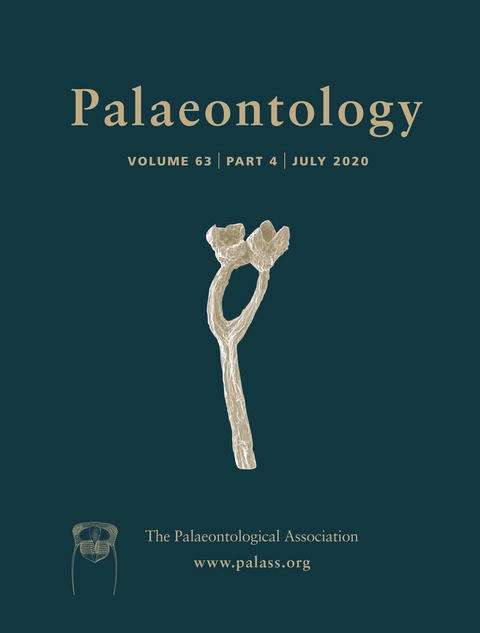Reg. Charity No. 1168330

Abstract Exceptionally well-preserved impressions of two bundles of bristles protrude from the apertures of small, spiral shells of Pelagiella exigua, recovered from the Kinzers Formation (Cambrian, Stage 4, ‘Olenellus Zone’, c. 512 Ma) of Pennsylvania. These impressions are inferred to represent clusters of chitinous chaetae, comparable to those borne by annelid parapodia and some larval brachiopods. They provide an affirmative test in the early metazoan fossil record of the inference, from phylogenetic analyses of living taxa, that chitinous chaetae are a shared early attribute of the Lophotrochozoa. Shells of Pelagiella exhibit logarithmic spiral growth, microstructural fabrics, distinctive external sculptures and muscle scars characteristic of molluscs. Hence, Pelagiella has been regarded as a stem mollusc, a helcionelloid expressing partial torsion, an untorted paragastropod, or a fully torted basal member of the gastropod crown group. The inference that its chaeta-bearing appendages were anterior–lateral, based on their probable functions, prompts a new reconstruction of the anatomy of Pelagiella, with a mainly anterior mantle cavity. Under this hypothesis, two lateral–dorsal grooves, uniquely preserved in Pelagiella atlantoides, are interpreted as sites of attachment for a long left ctenidium and a short one, anteriorly on the right. The orientation of Pelagiella and the asymmetry of its gills, comparable to features of several living vetigastropods, nominate it as the earliest fossil mollusc known to exhibit evidence of the developmental torsion characteristic of gastropods. This key adaptation facilitated an evolutionary radiation, slow at first and rapid during the Ordovician, that gave rise to the remarkable diversification of the Gastropoda.